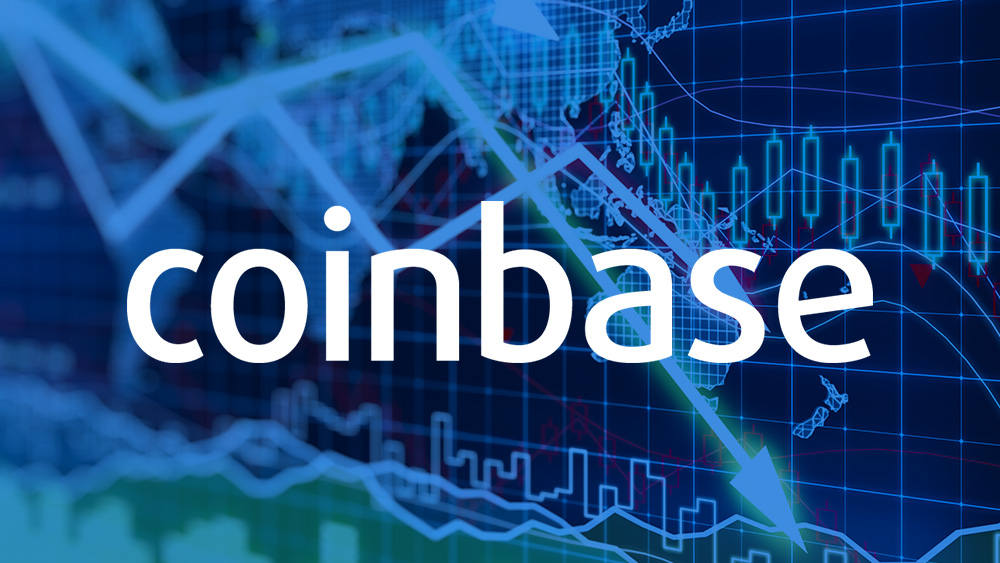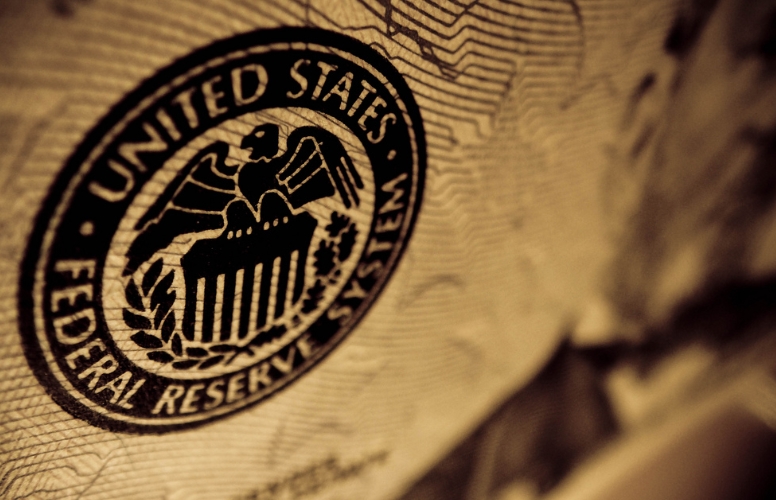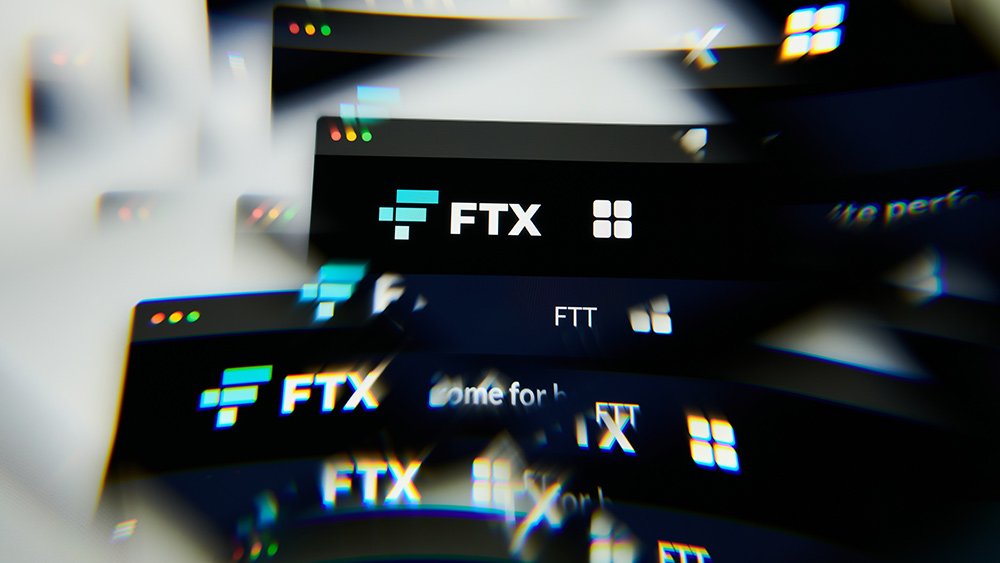Operation Choke Point 2.0 is underway, and crypto is in its crosshairs
02/12/2023 / By News Editors

What began as a trickle is now a flood: the US government is using the banking sector to organize a sophisticated, widespread crackdown against the crypto industry. And the administration’s efforts are no secret: they’re expressed plainly in memos, regulatory guidance, and blog posts. However, the breadth of this plan — spanning virtually every financial regulator — as well as its highly coordinated nature, has even the most steely-eyed crypto veterans nervous that crypto businesses might end up completely unbanked, stablecoins may be stranded and unable to manage flows in and out of crypto, and exchanges might be shut off from the banking system entirely. Let’s dig in.
(Article by Nic Carter republished from PirateWires.com)
For crypto firms, obtaining access to the onshore banking system has always been a challenge. Even today, crypto startups struggle mightily to get banks, and only a handful of boutiques serve them. This is why stablecoins like Tether found popularity early on: to facilitate fiat settlement where the rails of traditional banking were unavailable. However, in recent weeks, the intensity of efforts to ringfence the entire crypto space and isolate it from the traditional banking system have ratcheted up significantly. Specifically, the Biden administration is now executing what appears to be a coordinated plan that spans multiple agencies to discourage banks from dealing with crypto firms. It applies to both traditional banks who would serve crypto clients, and crypto-first firms aiming to get bank charters. It includes the administration itself, influential members of Congress, the Fed, the FDIC, the OCC, and the DoJ. Here’s a recap of notable events concerning banks and the policy establishment in recent weeks:
- On Dec. 6, Senators Elizabeth Warren, John Kennedy, and Roger Marshall send a letter to crypto-friendly bank Silvergate, scolding them for providing services to FTX and Alameda research, and lambasting them for failing to report suspicious activities associated with those clients
- On Dec. 7, Signature (among the most active banks serving crypto clients) announces its intent to halve deposits ascribed to crypto clients — in other words, they’ll give customers their money back, then shut down their accounts — drawing its crypto deposits down from $23b at peak to $10b, and to exit its stablecoin business
- On Jan. 3, the Fed, the FDIC, and the OCC release a joint statement on the risks to banks engaging with crypto, not explicitly banning banks’ ability to hold crypto or deal with crypto clients, but strongly discouraging them from doing so on a “safety and soundness” basis
- On Jan. 9, Metropolitan Commercial Bank (one of the few banks that serve crypto clients) announces a total shutdown of its cryptoasset-related vertical
- On Jan. 9, Silvergate stock falls to a low of $11.55 on bank run and insolvency fears, having traded as high as $160 in March 2022
- On Jan. 21, Binance announces that due to policy at Signature bank, they will only process user fiat transactions worth more than $100,000
- On Jan. 27, the Federal Reserve denies crypto bank Custodia’s two-year application to become a member of the Federal Reserve system, citing “safety and soundness” risks
- On Jan. 27, the Kansas City Fed branch denies Custodia’s application for a master account, which would have given it the ability to use wholesale payment services, and to hold reserves with the Fed directly
- On Jan. 27, the Fed also issues a policy statement which discourages banks from holding cryptoassets or issuing stablecoins, and broadens their authority to cover non-FDIC insured state-chartered banks (a reaction to Wyoming Special Purpose Depository Institutions (SPDIs) like Custodia, which can hold crypto alongside fiat for its banking customers)
- On Jan. 27, the National Economic Council releases a policy statement not explicitly banning banks from serving crypto clients, but strongly discouraging banks from transacting with cryptoassets directly or maintaining exposure to crypto depositors
- On Feb. 2, the DoJ’s fraud unit announces an investigation into Silvergate over their dealings with FTX and Alameda
- On Feb. 6, Binance suspends USD bank transfers for retail clients (Binance US was not affected)
- On Feb. 7, the Jan. 27 Fed statement is entered into the federal register, turning the policy statement into a final rule, with no Congressional review, or public notice-and-comment period
- As of Feb. 8, Protego and Paxos’ applications to follow Anchorage and obtain full approval to become National Trust Banks are still outstanding (past the 18 month deadline), and appear likely to be imminently denied by the OCC
In sum, banks taking deposits from crypto clients, issuing stablecoins, engaging in crypto custody, or seeking to hold crypto as principal have faced nothing short of an onslaught from regulators in recent weeks. Time and again, using the expression “safety and soundness,” they’ve made it clear that for a bank, touching public blockchains in any way is considered unacceptably risky. While neither the Fed/ FDIC/ OCC statement — nor the NEC statement a few weeks later — explicitly ban banks from servicing crypto clients, the writing is on the wall, and the investigations into Silvergate are a strong deterrent to any bank considering aligning itself with crypto. What is clear now is that issuing stablecoins or transacting on public blockchains (where they could circulate freely, like cash) is highly discouraged, or effectively prohibited. It is equally evident that a bank-issued fiat token would only be acceptable to regulators if it were domiciled on a surveilled, private blockchain. No ‘unhosted’ wallets allowed.
And perhaps most damagingly, the Fed’s devastating denial of Wyoming SPDI bank Custodia, as well as their policy statement, effectively ends any hopes that a state-chartered crypto bank might get access to the Federal Reserve system without submitting to FDIC oversight.
Why might crypto entrepreneurs be wary of the FDIC? It traces back to Operation Choke Point. Some in the crypto space believe that the recent attempts to ringfence the crypto industry and cut off its connectivity to the banking system are reminiscent of this little-known Obama-era program.
Beginning in 2013, Choke Point was a scheme which sought to marginalize specific industries operating legally — not through lawmaking, but by applying pressure via the banking sector. The Obama DoJ had already cut its teeth with its successful effort to sideline the online poker space in 2011 and 2012 with threats issued to banks supporting poker companies. With Choke Point, the Department decided to scale up its efforts and target other industries, starting with uncontroversial targets like payday lenders. Then, the DoJ coordinated with the FDIC and OCC to pressure member banks to “redline” — determine as too risky to do business with — certain legal but politically disfavored sectors, chief among them firearms manufacturers and adult entertainment. Banks and payment processors internalized this guidance, and even after the program was formally shuttered under Trump in 2017, its shadow lingered. Today, banks simply ascribe a higher risk to activities that they suspect might draw the government’s ire, even if no specific guidance exists.
Since Choke Point nominally ended, using financial rails as an extra-judicial political cudgel has only become more popular. Under pressure, a number of banks walked away from the Dakota Access Pipeline in 2017. In 2018, Bank of America and Citigroup deplatformed firearms companies, and BoA began to report client firearm purchases to the federal government. In 2019, AOC announced her intent to marginalize private prisons through her seat on the House Financial Services Committee.
Financial regulators are being asked to advance progressive causes, too. In 2021, the Democratic House passed the “Federal Reserve Racial and Economic Equity Act,” which would have required the Fed to aim to “eliminate disparities across racial and ethnic groups with respect to employment, income, wealth, and access to affordable credit.” Gensler’s SEC now maintains a controversial climate agenda, as does the Fed (at smaller scale). Kamala Harris has deputized banks to advance a racial equity agenda, effectively imposing uneven demographic standards for credit provision.
Today it’s even commonplace for explicitly conservative organizations like Gab or Parler, and various malcontents and dissidents who fall afoul of regime politics, to find themselves deplatformed from banks, fintech, and payment processors that they rely on to do business. For those who support this, I would invite you to imagine what financial inclusion (or exclusion) under a similarly zealous DeSantis administration might look like. “Just build your own bank,” right? Well, not if the Fed has anything to say about it. As evident with the stillborn Wyoming SPDI, the crypto industry tried that path and was utterly stymied.
Banks are highly regulated public-private partnerships in an environment where new charters are excruciatingly hard to obtain, and as such remain de facto arms of the state. It has been and remains trivial to deputize them to carry out political objectives. If there was any doubt, it’s now evident that the Obama administration and its successor in Biden’s regime are comfortable circumventing the First Amendment by engaging nominally private companies to do their dirty work. Anyone paying remote attention would have noticed the oddly close revolving door between monopolistic big tech firms and Obama/ Biden security state officials. And ever since Elon Musk leaked the Twitter Files, it’s nakedly clear that the US government and its security apparatus used proxies at Twitter for overt censorship and narrative control. Twitter is “just a private company,” though, right?
In 2017, Trump and Republican lawmakers like Rep. Luetkemeyer were able to put a stop to Choke Point for a time, but it didn’t last. One of the first moves from Biden’s OCC was to undo Brian Brook’s Fair Access rule that prohibited political discrimination in banking. Biden’s deputies picked up where Obama’s regulators had left off. And now, after the time it took to digest Biden’s Executive Orders, regulators are tightening the screw.
Today, the outlook for banks remotely interested in crypto is precarious. Bankers tell me that crypto is toxic and the risks of engaging with the asset class aren’t worth it. In the wake of the Custodia decision, obtaining a new charter for a crypto bank looks extremely unlikely. Banking innovations at the state level, like Wyoming’s SPDI for crypto banks, appear dead in the water. Federal Charters for crypto firms with the OCC also look dead in the water. Traders, liquid funds, and businesses with crypto working capital are nervously examining their stablecoin portfolios and fiat access points, wondering if bank connectivity might be severed with little notice. Privately, entrepreneurs and CEOs in crypto tell me that they sense a regulatory noose tightening. As crypto-facing banks ‘derisk,’ younger and smaller firms will struggle to get banking, taking us back to the 2014 to 2016 period when fiat access for crypto businesses was at an extreme premium. Exchanges and other businesses that rely on fiat onramps are concerned that their few remaining bank partners will shut them off or institute draconian standards for scrutiny. As a venture capitalist operating at the early stage, I am directly witnessing the chilling effects of this policy in action. Founders are reckoning with new uncertainties around whether they’ll be able to operate their businesses at all.
So why the push by bank regulators now? The FTX collapse and its ensuing effects, particularly on Silvergate, provides much of the answer. Financial regulators weren’t interested in FTX while the fraud was underway (with the exception of the SEC and its chairman Gensler, who had oddly close ties to the organization), but ever since the exchange failed in spectacular fashion, they are now contemplating ways to avoid the next such collapse. FTX as an offshore exchange was not directly supervised by financial regulators (aside from FTX US, which was a marginal stub), so it was outside of their direct aegis. However, regulators believe that they might have a silver bullet in the fiat on- and off-ramps on which the industry relies. If they can choke off fiat access, they can marginalize the industry — on and off shore — without regulating it directly.
In some key respects, Crypto Choke Point 2.0 differs from the original. It appears that the administration has learned from the efforts of its predecessors. In Choke Point 1.0, guidance was mainly informal and involved backdoor, off-the-record conversations. Its main tool was the threat of investigation from the DoJ and FDIC if financial institutions didn’t internalize the administration’s risk standards. Because this was patently unconstitutional, it gave Republicans the collateral to ultimately repeal the program. In 2.0, everything is happening in plain sight, in the form of rulemaking, written guidance, and blogs. The current crypto crackdown is being sold as a “safety and soundness” issue for banks, and not merely a reputational risk issue. Jake Chervinsky of the Blockchain Association calls it “regulation by blog post.” No need to ask Congress for new laws if federal regulators can simply make policy (and in the case of the Fed, grow their scope and mandate) by publishing guidance which dissuades banks from doing business with crypto. Custodia’s Caitlin Long calls the Fed denial of her application “shooting the stallion to scatter the herd.”
As a consequence, the only banks willing to touch crypto at this point are smaller, less risk-averse ones, with more to gain from banking the industry. However, this means that crypto deposits and flows end up being substantial relative to their core business, which introduces concentration risks. Banks prefer not to have excessive exposure to single counterparties, or a depository base that is highly correlated in its flows. Silvergate felt this acutely with the bank run it suffered — and survived — post FTX. While it’s impressive that they were able to honor a 70% drawdown in their depository base, that episode will dissuade any banks looking to serve crypto clients that might face the same.
And practically speaking, labeling crypto-facing banks “high risk” has four direct effects: it gives them a higher premium with the FDIC, they face a lower cap rate with the Fed (which inhibits their ability to overdraw), they face restrictions on other business activities, and management risks a poor examination score with their regulatory supervisors, which inhibits their ability to do M&A. So while some analysts like Wilson Sonsini’s Jess Cheng have pointed out, somewhat optimistically, that banks are not explicitly barred from providing crypto custody or onboarding crypto clients, they still stand to get labeled high risk — and face serious business hurdles as a result.
Some might be sympathetic to regulators’ attempts to insulate the banking system from the vicissitudes of the crypto space. But thus far, crypto’s various disasters haven’t produced any meaningful contagion. The industry had a full-blown credit crisis in 2022, with virtually every major lender going bankrupt, but the damage was contained. The worst fallout in the banking space was suffered by Silvergate, which suffered an $8b drawdown, but survived. No onshore, fiat-backed stablecoin suffered any meaningful adverse effects, despite the massive crypto selloff in 2021 and 2022. They functioned as intended. And no contagion spilled into traditional finance via mass selling of Treasuries, something officials have historically felt might be a key transmission channel.
As Biden enters the second half of his term, his crackdown on crypto banking has deflated hopes for a regulatory rapprochement in the US. Many crypto entrepreneurs now tell me that they’re waiting for 2025 and a putative DeSantis regime for things to turn. Some can’t wait that long, and are shuttering their plans for businesses which involve any type of regulatory approval, especially with regards to bank charters. Regulators are effectively picking winners — with larger, more established crypto firms able to hang on to their bank relationships, while newer ones are shut out. Meanwhile, other jurisdictions are making a bid for their business. Hong Kong has adopted a friendlier tone once again, as has the UK. The UAE and the Saudis are looking to attract crypto firms. And US regulators can scarcely afford to forget what happened with FTX, in which they curtailed the business activities of onshore exchanges, effectively pushing US individuals into the waiting claws of SBF. If bank regulators continue their pressure campaign, they risk not only losing control of the crypto industry, but ironically increasing risk, by pushing activity to less sophisticated jurisdictions, less able to manage genuine risks that may emerge.
-Nic Carter
Author’s note: Thanks to Austin Campbell for his feedback on this story.

Read more at: PirateWires.com
Submit a correction >>
Tagged Under:
banking, central banks, crypto, cryptocurrency, enslaved, finance, government, money, obey, politics, risk
This article may contain statements that reflect the opinion of the author
RECENT NEWS & ARTICLES
COPYRIGHT © 2018 CRYPTOCULT.NEWS
All content posted on this site is protected under Free Speech. CryptoCult.news is not responsible for content written by contributing authors. The information on this site is provided for educational and entertainment purposes only. It is not intended as a substitute for professional advice of any kind. CryptoCult.news assumes no responsibility for the use or misuse of this material. All trademarks, registered trademarks and service marks mentioned on this site are the property of their respective owners.

















